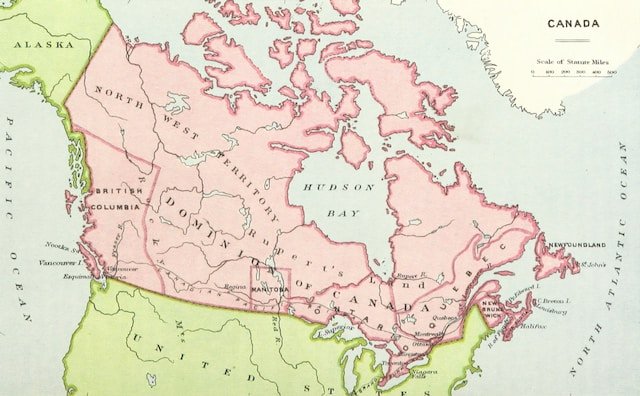The Proclamation of 1763
Introduction:
The Proclamation of 1763 stands as a pivotal moment in North American history, marking a significant shift in colonial relations and foreshadowing tensions that would eventually lead to the American Revolution. Issued by King George III of England, this decree significantly altered colonial territorial boundaries, indigenous rights, and the direction of westward expansion. To fully appreciate its significance, we must understand the context in which it was issued and the ripples it created.
Prelude to the Proclamation:
The Seven Years’ War (1756-1763) between Britain and France, known in America as the French and Indian War, played a significant role in shaping the future of the North American continent. The conflict, which culminated in the Treaty of Paris in 1763, saw Britain emerge as the dominant colonial power in North America, acquiring vast territories formerly held by France.
However, governing these vast new territories and managing relations with the indigenous populations presented significant challenges. To establish some form of order and control, the British government decided to issue the Proclamation of 1763.
The Core Provisions of the Proclamation:
- Territorial Boundaries: The Proclamation drew a boundary, often referred to as the “Proclamation Line,” along the crest of the Appalachian Mountains. English settlers were prohibited from settling west of this line, keeping those lands reserved for Native American tribes.
- Indigenous Relations: Recognizing the need to foster more harmonious relations with Native Americans, the Proclamation aimed to halt the expansion of colonial settlements into tribal territories, preventing further friction.
- Land Transactions: The Proclamation decreed that only the British Crown had the authority to purchase land from Native Americans, curtailing private land transactions.
Colonial Reactions:
The response to the Proclamation among the English colonists was largely negative:
- Economic Concerns: Many colonists, especially land speculators, were frustrated as they saw the vast territories to the west as potential economic opportunities.
- Perceived Tyranny: For many, the Proclamation represented yet another instance of the British Crown’s overreach, dictating terms without understanding or considering colonial aspirations.
The Proclamation’s Legacy:
While the Proclamation of 1763 was initially intended as a temporary measure, its implications were far-reaching:
- Seeds of Discontent: It sowed seeds of discord between the colonists and the British government, contributing to the rising tensions that eventually culminated in the American Revolution.
- Indigenous Rights: The Proclamation recognized, at least nominally, the rights of indigenous people to their lands – a principle that would shape future treaties and negotiations.
- Shift in British Colonial Policy: The Proclamation signified a turning point in British colonial administration, reflecting a more centralized approach to governance that was less receptive to colonial autonomy.
Modern Perspectives:
Today, historians view the Proclamation of 1763 as a multifaceted document:
- A Double-edged Sword: While it was progressive in its recognition of indigenous rights, it also was a tool of British imperial control.
- Reflection of the Times: The Proclamation mirrored the complexities and challenges of governing an expansive, diverse, and rapidly changing North American landscape in the 18th century.
The Indigenous Perspective:
While the Proclamation of 1763 has often been explored from the viewpoint of the British Crown and the American colonists, the Native American perspective offers a different lens. For many tribes:
- A Temporary Relief: The Proclamation provided a brief respite from the relentless westward push of European settlers. This was especially important for tribes like the Shawnee and Delaware, who had already been displaced multiple times.
- Promises Unkept: Despite the Proclamation’s intentions, encroachments on tribal lands continued, often leading to confrontations. The British Crown’s inability to effectively enforce its own directive highlighted its limitations.
Economic and Demographic Implications:
- Land Speculators: These individuals had invested heavily in western lands, anticipating a rush of settlers. The Proclamation’s restrictions rendered many of these investments void, leading to significant financial losses.
- Population Growth: The thirteen colonies were experiencing rapid population growth. With limited land available for farming, many colonists looked westward for expansion. The Proclamation thwarted these ambitions, leading to overcrowding and increased land prices in the colonies.
The Rise of Smuggling and Defiance:
The Proclamation, combined with other British policies like the Sugar Act and the Stamp Act, led to a rise in smuggling. Many colonists, feeling stifled by the Crown’s regulations, began to defy them:
- Illicit Settlements: Despite the Proclamation’s clear directives, many settlers crossed the Appalachian boundary, establishing illegal homesteads on indigenous lands.
- Economic Defiance: Smuggling became a form of economic resistance, with colonial merchants evading British customs duties, underscoring the growing rift between the colonies and the Crown.
Evolution into Further Legislation:
The inability to enforce the Proclamation of 1763 led the British government to introduce further legislation:
- The Quebec Act of 1774: This act expanded the province of Quebec into the Ohio Valley, further infringing on lands that colonists believed should be open for English settlement. The Act, while unrelated to the Proclamation, further soured relations and was one of the so-called “Intolerable Acts” that pushed the colonies towards revolution.
The Proclamation’s Shadow on Modern Issues:
The Proclamation’s influence can still be seen today, especially in discussions about indigenous rights and land ownership:
- Treaty Negotiations: The recognition of Native American land rights in the Proclamation set a precedent, which is still invoked in modern treaty negotiations between indigenous groups and governments.
- Cultural Recognition: The Proclamation has been used in historical discussions as an early acknowledgment by European powers of the sovereignty and rights of indigenous peoples.
Conclusion:
The Proclamation of 1763 was not just a delineation of territorial boundaries; it was a statement about power, control, and the complexities of empire-building. While it was a response to immediate post-war challenges, its effects resonated for decades, shaping the trajectories of countless lives – both indigenous and colonial – and setting the stage for revolutionary change. Understanding the Proclamation provides valuable insights into the intricate tapestry of North American history and the ever-evolving nature of colonial relations.







